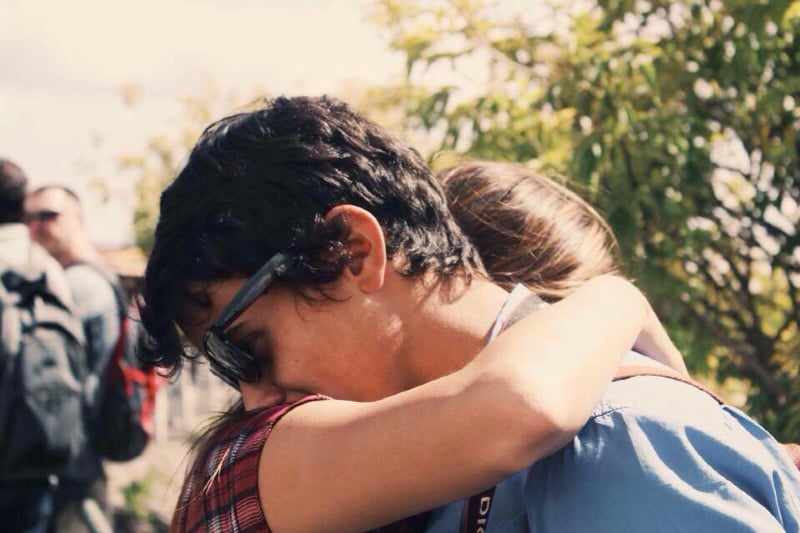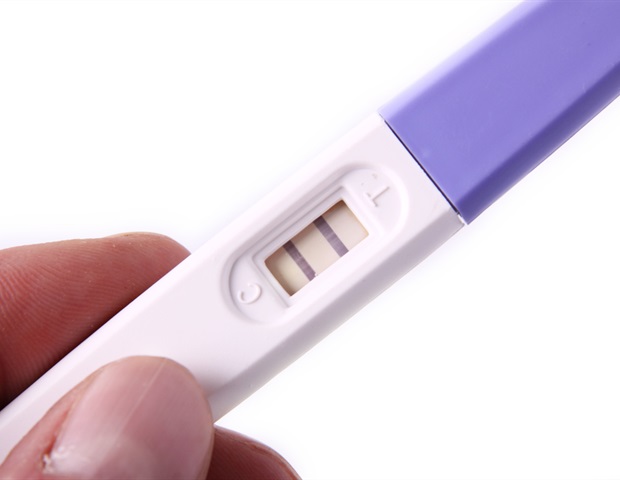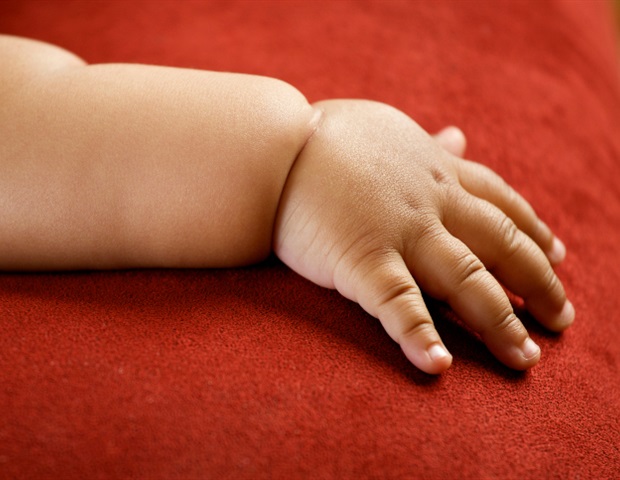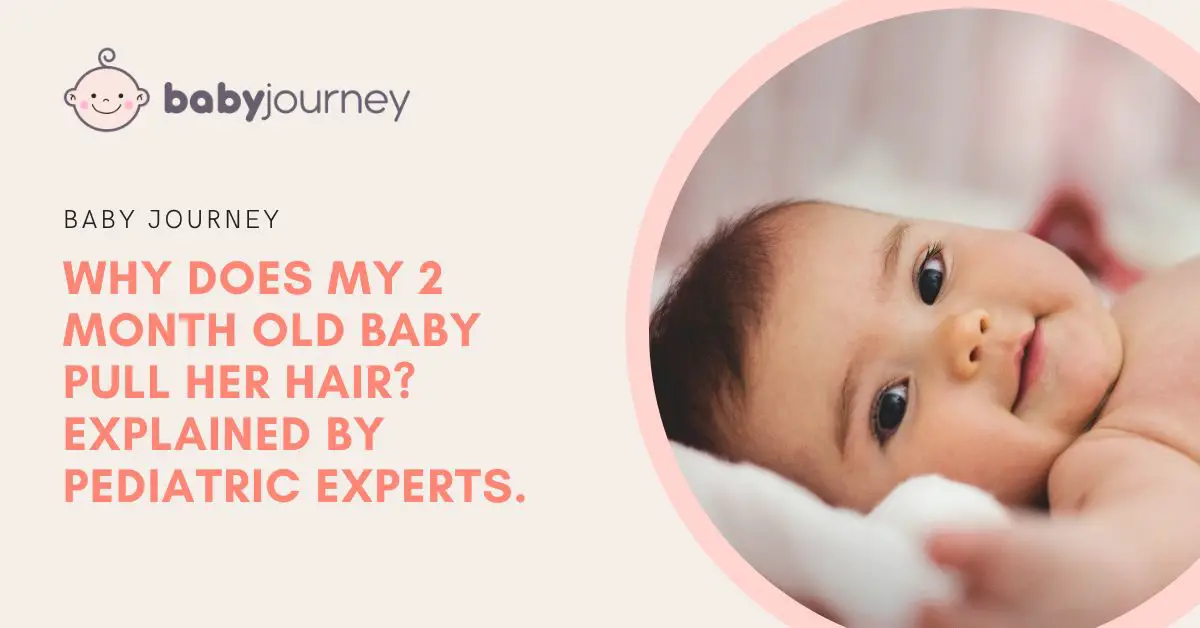Why does my 2 month old baby pull her hair? Hair pulling is a common self-soothing behavior in babies. While it may seem concerning to parents, it is usually harmless and will typically resolve on its own. However, if the behavior continues or is excessive, it may be a sign of an underlying issue that needs to be addressed.
Why do babies pull hair? Babies may pull their own hair for a variety of reasons, including to soothe themselves, to explore their environment, or simply because it feels good. Why does my baby pull her hair when going to sleep? When it comes to sleep, hair pulling may be a self-soothing behavior for babies who are having trouble falling asleep or staying asleep. Self-soothing behavior is a natural part of a baby’s development, and own hair pulling is just one way that babies may try to calm themselves down. However, if the behavior becomes excessive or is accompanied by other symptoms, such as irritability or difficulty sleeping, it may be a sign of a more serious issue.
Parents can help their babies by providing alternative ways to self-soothe, such as a pacifier or a soft toy to cuddle with. If the behavior persists, it may be helpful to speak with a pediatrician or a child development specialist to rule out any underlying medical or developmental issues. With patience and support, most babies will outgrow hair pulling and develop healthier ways to self-soothe.
Causes of Hair Pulling in Babies

Why does my baby pull his hair? Hair pulling in babies is a common behavior that may worry parents. However, it is important to understand that this behavior is usually harmless and a part of normal development. There are several reasons why do babies pull their hair, and it is important to identify the underlying cause to address the behavior.
Sensory Input
One of the reasons why do babies pull their hair at 3 months is due to sensory input. Babies are still learning about their environment and may pull their own hair to feel the sensation on their scalp. This behavior is similar to how babies put objects in their mouth to explore different textures such as a sensory toy. Hair pulling may provide a new sensory experience for babies, and they may continue to do it until they are satisfied.
Self-Soothing
Hair pulling can be a common behavior in babies, and it can have a variety of causes. One reason why does my baby pull her hair is because they are exploring their bodies and the world around them. Hair pulling can also be a self-soothing behavior for babies. When babies feel overwhelmed or anxious, they may pull their own hair to calm themselves down.
This behavior can be a way for babies to regulate their emotions and feel more secure. Parents can look for other signs of stress or anxiety in their baby, such as crying or fussing, to identify if hair pulling is related to self-soothing. If hair pulling becomes excessive or causes harm to the baby, it is important to consult with a healthcare provider to rule out any underlying medical conditions.
Exploration
Another reason why do babies pull their hair is to explore their surroundings. Babies are curious and want to touch and feel everything around them. Hair pulling may be a way for babies to explore their own hair and scalp. This behavior can also be related to cause and effect, where babies pull hair to see what happens next.
In conclusion, hair pulling in babies is a common behavior that has many underlying causes. Parents should not be overly concerned about this behavior unless it becomes excessive or causes harm to the baby. Understanding the reasons behind hair pulling can help parents address the behavior and provide alternative ways for babies to explore and self-soothe.
When to Worry About Hair Pulling

Hair pulling is a common behavior in babies, but it can be concerning for parents. In most cases, hair pulling is harmless and a normal part of a baby’s development. However, there are situations when hair pulling can be a sign of a more serious problem. Here’s when to worry about hair pulling in your 2-month-old baby.
Trichotillomania
Trichotillomania is a disorder that causes people to pull out their own hair compulsively. While it’s rare in babies, it’s not impossible. If your baby is pulling out hair excessively and causing bald patches, it could be a sign of trichotillomania. If you suspect your baby has trichotillomania, it’s important to speak with a pediatrician.
Hair Loss
Hair pulling can lead to hair loss, which can be a concern for parents. If your baby is pulling out hair excessively and causing bald patches, it’s important to speak with a pediatrician. Hair loss can also be a sign of other underlying health issues, so it’s important to rule out any medical problems.
If you’re concerned about your baby’s hair pulling behavior, it’s important to speak with a pediatrician. They can help determine if there’s an underlying medical issue or if the behavior is normal. A pediatrician can also provide guidance on how to manage the behavior and prevent hair loss.
In general, hair pulling in babies is a normal behavior and nothing to worry about. However, if your baby pulls out hair excessively and causing bald patches, it’s important to speak with a pediatrician. They can help determine if there’s an underlying medical issue or if the behavior is normal.
Also read: The 5 Types of Children Asthma Medications
How to Stop Hair Pulling in Babies

Babies pulling their hair is a common behavior that can be caused by a variety of reasons. If you are concerned about your 2-month-old baby pulling her hair, there are some techniques that you can use to help stop this behavior.
Distraction Techniques
One way to stop hair pulling in babies is to distract them with other activities. Playing with toys or a stuffed animal can help redirect their attention away from their hair. You can also try touching or holding their hands to prevent them from reaching for their hair.
Self-Soothing Alternatives
Hair pulling in babies can also be a sign of self-soothing during moments of stress or anxiety. Providing your baby with other self-soothing alternatives can help reduce hair pulling. Some alternatives include giving your baby a pacifier, swaddling them, or providing a warm bath.
Stay Calm
It’s important to stay calm when trying to stop hair pulling in babies. Reacting with frustration or anger can cause your baby to become more anxious and increase hair pulling. Instead, try to remain calm and provide positive reinforcement when your baby engages in other behaviors.
In conclusion, hair pulling in babies can be a common behavior that can be caused by a variety of reasons. Using distraction techniques, providing self-soothing alternatives, and staying calm can help reduce hair pulling in babies. If you are concerned about your baby’s hair pulling behavior, it’s always best to consult with your pediatrician for additional help and guidance.
When to Seek Professional Help

If a parent or caregiver is concerned about their baby’s hair-pulling behavior, they may want to consider seeking professional help. Here are some potential professionals to consider:
Psychologist
A psychologist may be able to help a parent or caregiver understand why their baby pulls their hair and provide strategies for managing the behavior. They may also be able to help the parent or caregiver work through any stress or anxiety they may be experiencing as a result of their baby’s behavior.
Cognitive Behavior Therapy
Cognitive behavior therapy (CBT) is a type of therapy that can help individuals identify and change negative thought patterns and behaviors. For babies who are pulling their hair as a result of stress or anxiety, CBT may be a helpful intervention.
Medication
In some cases, medication may be prescribed to help manage hair-pulling behavior in babies. However, medication is typically only used as a last resort and under the guidance of a pediatrician or mental health professional.
It is important to note that hair-pulling behavior in babies is not always indicative of a mental disorder or obsessive-compulsive disorder. However, if a parent or caregiver is concerned about their baby’s behavior, it is always best to seek the guidance of a medical professional.
Preventing Hair Pulling in Babies

Hair pulling is a common self-soothing technique for many babies. While it is generally harmless, it can be concerning for parents. Here are some tips to prevent hair pulling in babies.
Positive Reinforcement
Positive reinforcement is a great way to encourage good behavior in babies. When the baby is engaged in an activity that does not involve hair pulling, praise and reward them. This will help the baby understand that good behavior is appreciated and will be rewarded.
Minimizing Negative Attention
Babies crave attention, even negative attention. If a baby pulls their hair for attention, it is important not to give in to their demands. Instead, try to redirect their attention to something else. This will help the baby understand that hair pulling is not an acceptable way to get attention.
Creating a Calm Environment
Babies are easily overwhelmed by light, noise, and activity. It is important to create a calm environment for the baby to reduce stress and prevent hair pulling. If the baby is tired, hungry, upset, or hurt, they may be more prone to hair pulling. So, make sure to address any issues that may be causing the baby discomfort.
It is also important to understand that hair pulling may be a result of frustration or other emotions. While babies cannot communicate their feelings through language, they can express themselves through actions. So, it is important to pay attention to the baby’s behavior and respond appropriately. If the baby pulling their hair out of anger or frustration, it is important to acknowledge their emotions and help them find a better way to express themselves.
Finally, it is important to set boundaries for the baby. While they may not understand the concept of “no” yet, it is important to establish boundaries and consistently enforce them. This will help the baby understand what is acceptable behavior and what is not.
By using positive reinforcement, minimizing negative attention, creating a calm environment, and setting boundaries, parents can help prevent hair pulling in babies.
Conclusion
In conclusion, hair pulling is a common behavior in babies, and there are various reasons why do babies pull their hair at 2 months. It is important for parents to understand that hair pulling is not necessarily a sign of a serious underlying issue, but it is important to identify the cause of the behavior and take appropriate measures to address it.
Some of the reasons why a baby may pull hair include self-soothing, boredom, or curiosity. It is important to note that hair pulling can also be a sign of discomfort or pain, so parents should be aware of any other symptoms their baby may be experiencing.
If a baby is pulling their hair excessively, parents can try some of the tips and strategies suggested by experts, such as providing a sensory toy or object for the baby to play with, or distracting them with a different activity. It is also important to ensure that the baby’s basic needs are met, such as being well-fed and getting enough sleep.
If hair pulling persists or is accompanied by other concerning symptoms, parents should seek advice from a healthcare professional. With the right strategies and support, most babies will eventually outgrow hair pulling and develop healthier coping mechanisms.


 PARENTING TIPS
PARENTING TIPS







 PREGNANCY
PREGNANCY








 BABY CARE
BABY CARE








 TODDLERS
TODDLERS








 TEENS
TEENS








 HEALTH CARE
HEALTH CARE







 ACTIVITIES & CRAFTS
ACTIVITIES & CRAFTS








 CONTACT
CONTACT ABOUT
ABOUT



